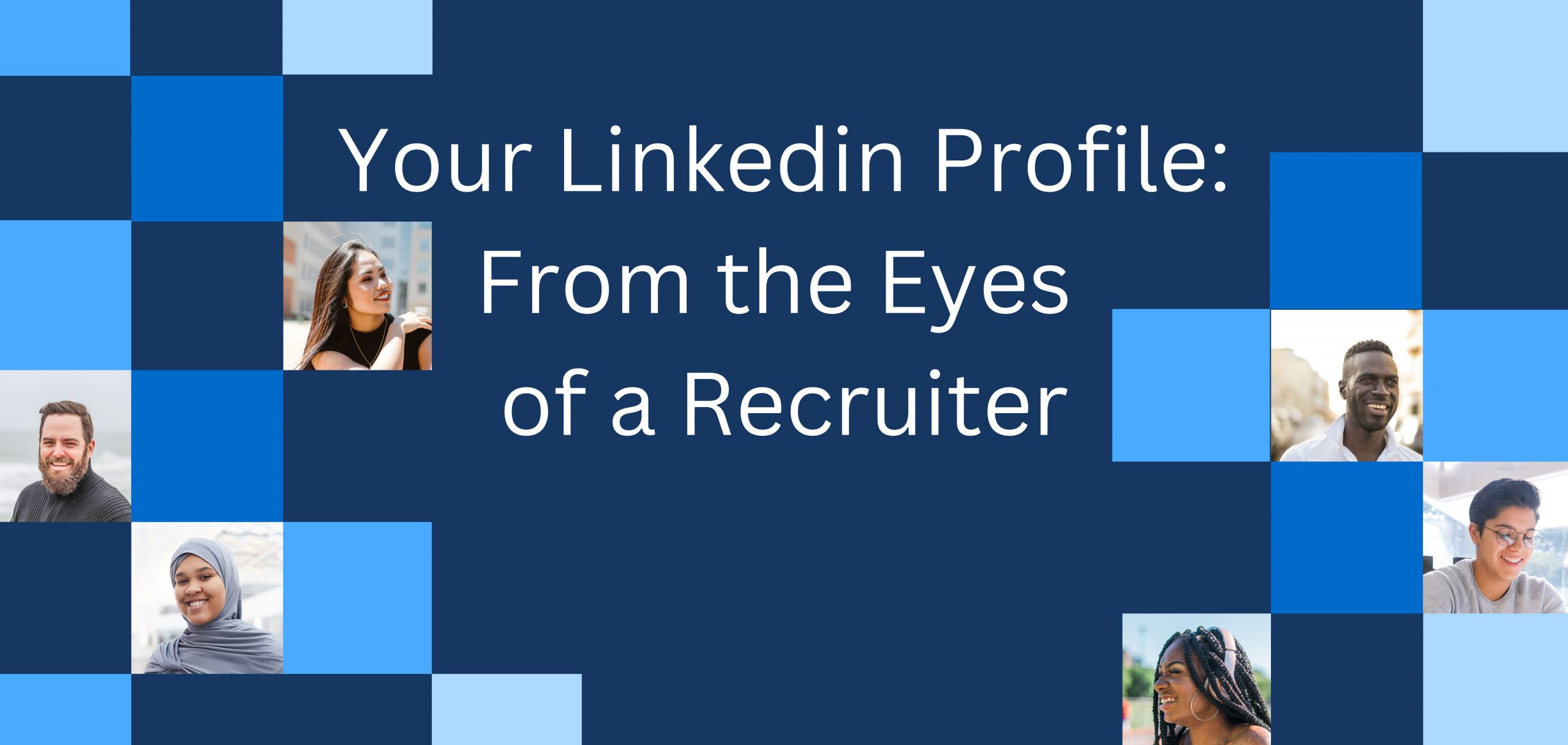Your LinkedIn Profile: From the Eyes of a Recuiter
October 17, 2022
 Whether you’re just starting your job search, or if you’ve been looking for months, LinkedIn is one of the most impactful tools you have to move your career forward.
Whether you’re just starting your job search, or if you’ve been looking for months, LinkedIn is one of the most impactful tools you have to move your career forward.
Once you apply on a company’s website, expect someone who is involved in the hiring process to look at your LinkedIn profile. With all the features included on the platform, it may feel overwhelming to decide what you should spend time updating, and how you should format your profile.
Here are the top three sections of your LinkedIn profile you should have updated to help increase your chances of being selected to move forward in the interview process.
1) The most important portion of your profile is the Experience section.
The Experience section is the main area a Recruiter or hiring manager is interested in and should answer any initial questions they have about your qualifications. Fill this section out completely with Company, Position, Dates of Employment (including months and years), and an overview of your position and accomplishments in the body or description section. Include technologies, methodologies, top responsibilities of your role, and any other pertinent information that helps an outsider understand your achievements.
You will want to format this section in a way to make it clear, concise, and skimmable. This will be more attractive to the human eye and will make it easier for a search engine to pull your profile in a relevant search.
2) Depending on your seniority in your field and position, a Recruiter’s eyes may move to a few different areas of your profile after reviewing the Experience section. If there are remaining reservations about your knowledge of coding languages, technologies, processes, or if your experience seems light, the Recruiter will seek out supplemental information. This supplemental information can be located in the Skills, Education, or Certifications sections, but this will vary based on seniority in your industry and how well your Experience section explained your past roles.
If you just started your career, update your Education with your degree, dates, courses, and related clubs you were involved in during school.
As someone more established in your career, industry-related or career-related certifications can give you an extra edge.
An updated Skills section is a benefit, but have your technologies and skills in the Experience section. If the skill is important enough for you to list in this section, you should be able to show where and when you used it in the Experience section.
3) Lastly, your profile will be viewed holistically. This includes your profile and background picture, Summary section, and any grammatical or typographical errors.
For your profile picture, it is recommended to use a professional-looking headshot. You don’t need to pay a photographer for this, but your picture should complement your experience, not distract from it. Some people like to use professional family photos or other more personal pictures. If the picture was taken well and it is clear who in the photo the profile belongs to, this can indirectly show more of your personality. However, the most professional and safest option is to use a professional headshot.
The Summary section allows you to make your profile more personal. You can add context to your experience and career path, and you can add personal touches to include more about yourself.
Typos slip by unnoticed too often. Review your profile to ensure there are not errors in your Job Titles, your profile headline, and the description for your two most recent positions. A crisp, reviewed profile portrays your professionalism and helps you move from job titles and dates on a profile, to a potential employee.
Hiring Managers are trying to glean more about you, your skillset, and your professionalism. Review your profile objectively, or have someone review it for you and share their honest feedback. Red flags such as inconsistencies, an unwelcoming profile picture, glaring typos, or incomplete information could discourage a Recruiter or hiring manager from moving forward with you in the interview process.
Take a moment when you can focus, and review your profile in the eyes of the Recruiter.
